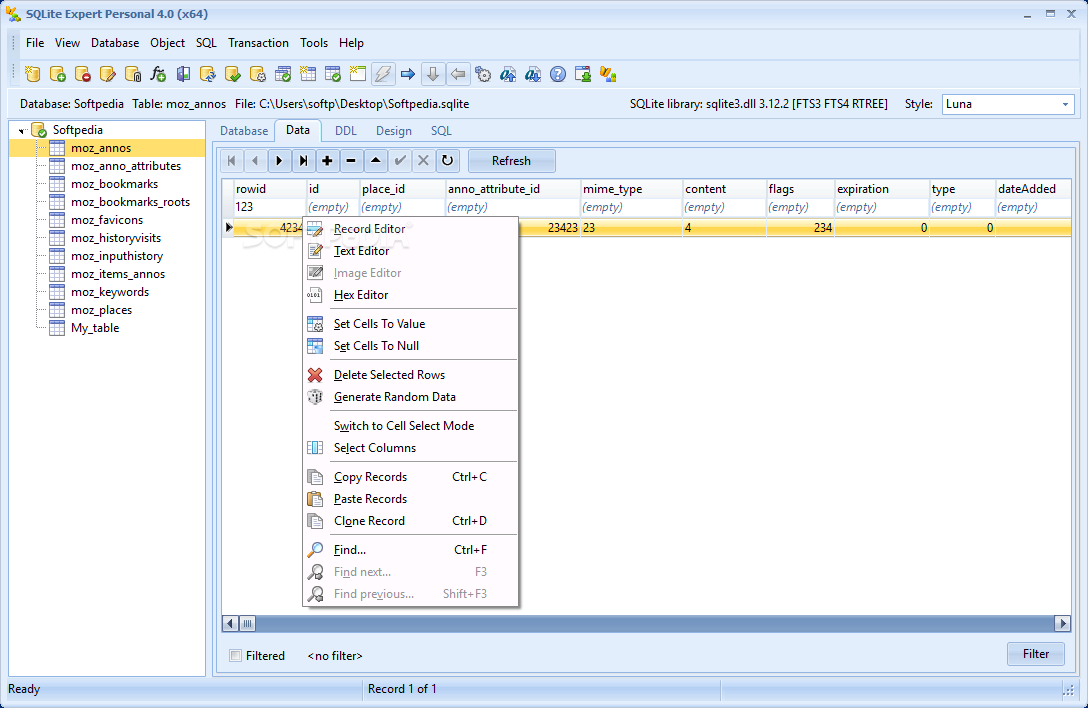
Subsequent executions will reuse the compilation of the first one. To get optimal performance when inserting or updating data, ensure that you do the following: Use a transaction. Otherwise, the EXISTS operator returns false or NULL. SQLite doesn't have any special way to bulk insert data. If the subquery returns one or more row, the EXISTS operator return true. In this syntax, the subquery is a SELECT statement that returns zero or more rows. Note the last two INSERTs in particular: The first one updates the row with a null value, and the second one generates an error because it doesn’t fully specify a unique index. The EXISTS operator is a logical operator that checks whether a subquery returns any row. you can take a look at the database (quotes.db) using a SQLite client such as DB.

#SQLITE UPSERT UPDATE#
> ON CONFLICT(name) DO UPDATE SET value2 = excluded.value2 Įrror: ON CONFLICT clause does not match any PRIMARY KEY or UNIQUE constraint In later examples, we'll use dataset's upsert method to do so. Sqlite> INSERT INTO ex(name, value2) VALUES ('bla', 'val4')

> ON CONFLICT(name) WHERE value1 IS NULL DO UPDATE SET value2 = excluded.value2 Sqlite> INSERT INTO ex(name, value2) VALUES ('bla', 'val3') Sqlite> INSERT INTO ex(name, value1, value2) VALUES ('bla', 1, 'val2') Sqlite> INSERT INTO ex(name, value2) VALUES ('bla', 'val1') Sqlite> INSERT INTO ex(name) VALUES ('bla') Features: BulkInsert, BulkDelete, BulkUpdate, BulkMerge, and more Support: SQL Server, MySQL, Oracle, PostgreSQL, SQLite. The above query, after execution, will return us every value inserted in the database, along with the id of each row. Sqlite> CREATE UNIQUE INDEX ex_idx_name ON ex(name) WHERE value1 IS NULL Since version 3.35.0 (), SQLite supports the RETURNING clause, which allows you to return a result row (or specific columns) for each modified database row by a DELETE, UPDATE or INSERT statement.
#SQLITE UPSERT DRIVER#
Also, sqlalchemy need the driver to connect with the database, In this article, I will use MySQL database as an example. This library can interact with any kind of databases by the build upon a great library called sqlalchemy, you could read more about both libraries at the end of this article. If you are trying to insert/update a player whose ID already exists, the SQLite engine will delete that row and insert the. To do Upsert, just like in part 1, we will use my custom library py-topping. In other words, you dont have foreign key, or if you have them, your SQLite engine is configured so that there no are integrity exceptions. Sqlite> CREATE TABLE ex(name, value1, value2) Option 1: You can afford deleting the row.


 0 kommentar(er)
0 kommentar(er)
